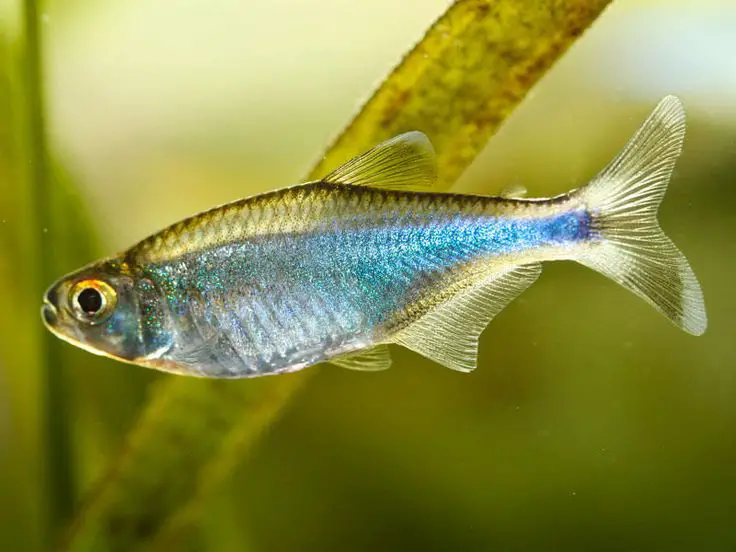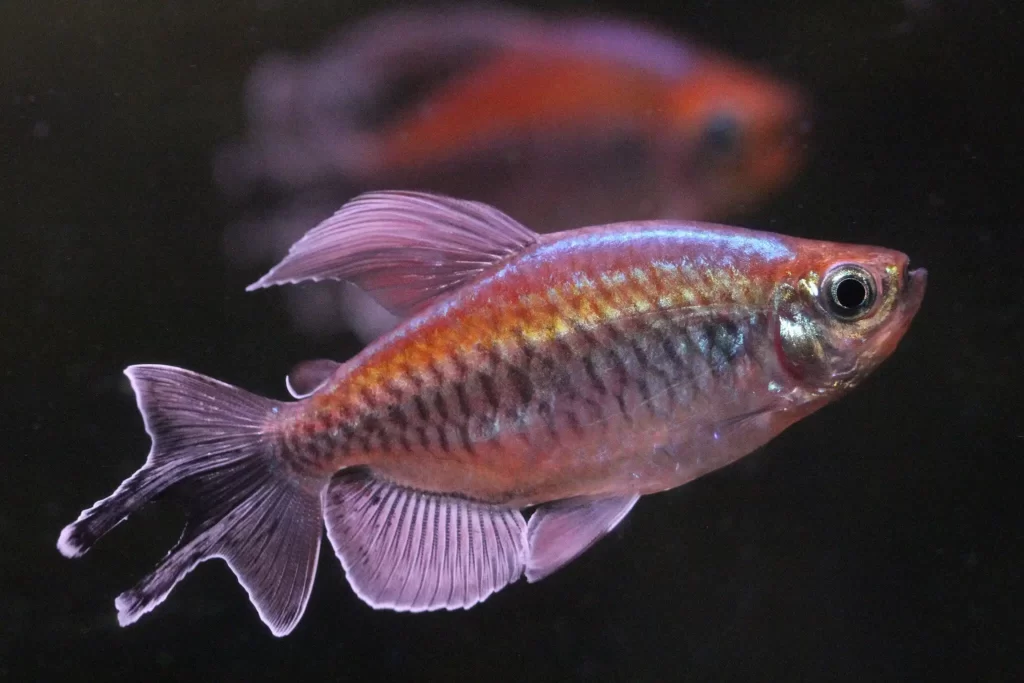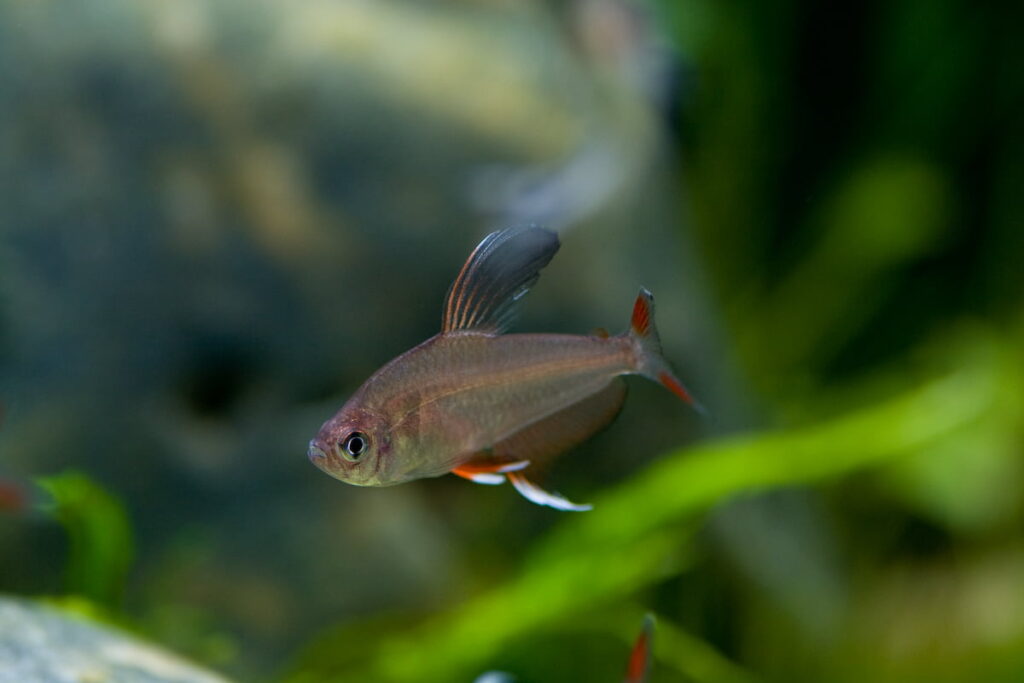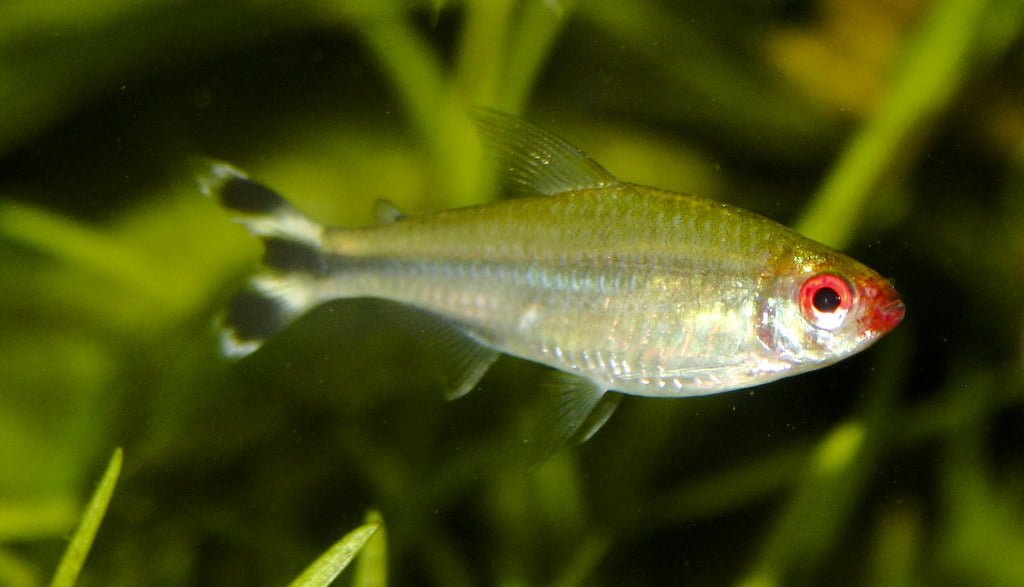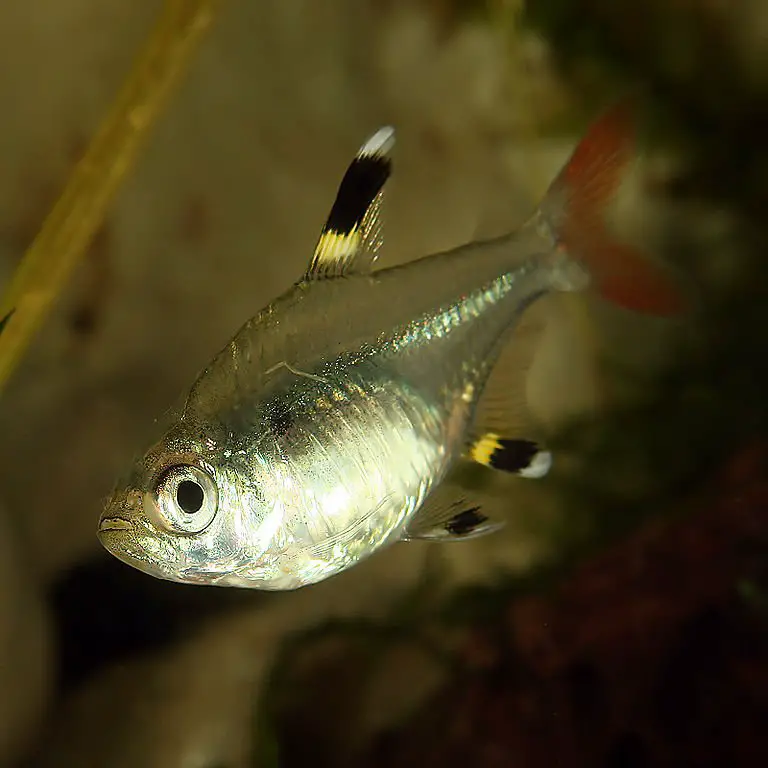There are so many wonders in the aquarium world and some fish still leaves me stunned with their beauty and charm. And when we talk about the family members of tetra fish, there are so many wonderful ones people often talk about. Have you ever tried to search for a fish according to your favorite color? Well, I have, and when I discovered about a blue tetra, I was head over heels in love with it.
Blue tetra (Scientific name: Boehlkea fredcochui), which is also commonly known as Cochu’s Blue Tetra or Blue King Tetra, are some of the smaller varieties of tetra fish. They origin from the Southern American regions and are perfect schooling fish for any community tank. But for the best result and to achieve beautiful aquarium scenery, they do best on a planted aquarium.
Let’s learn more about the fish, their care, diets, their tankmates, and many more so that you can keep them happy in your aquarium.
Origin and Habitat in the Wild
Cochu’s Blue Tetras are native to rivers and streams of the Amazon basin from the Sothern American regions. In their natural habitat, the temperature ranges from 73°F to 82°F, and the pH varies anywhere from 6-8. This variation in the water parameter makes it able to survive in the harshest of environments.
Characteristics
The fish is blue, and its small size makes it one of the best choices for a schooling fish for a planted tank. Keeping it in a densely planted tank with a lot of hiding places will help it bring its color out to the fullest.
Fish Description
Cochu’s Blue Tetras are usually streamlined in shape. The size of the fish lengthwise is 1.6 inches at the most. An adult Cochu’s blue tetra starts showing its amazing blue color and, at times, may develop pink coloration in its body.
Appearance
Cochu’s Blue tetra’s thin streamlined, yet the bright blue color makes it stand out from other fish in your tank. Its color varies from dull sky blue to dark, dazzling shiny blue according to its health and condition.
Availability
Cochu’s blue tetras are not one of the most easily available fish and also are not rare; you can easily find them in some of the major fish stores and may be seasonal at times.
Price
Cochu’s blue tetras are priced decently. Even if they’re not as popular and as available as other tetras, they are reasonably priced. A pair of Cochu’s tetras cost usually form 4-6$ per pair of fish and might vary from shop to shop.
Lifespan
Lifespan in the wild and captivity can vary vastly. In the wild, these fish tend to live for 5-6 years. However, in the aquarium/captivity, they usually live for up to 2-3 years if you provide them with the right water conditions and proper foods.
Sexual Difference:
Similar to other tetras, sexing Cochu’s blue tetra’s are not as accurate as you would like them to be. Male fish are usually brightly colored, more streamlined, and slimmer than female fish. The female Cochu’s tetras are wider, less streamlined, and are generally dull-colored than the male counterpart.
Fishkeeping Difficulty
Cochu’s tetras are gentle fish and are not that demanding at all. If provided with good water quality and food, it is quite easy to take care of this fish. Keep them in a planted aquarium of at least 20 Gallon.
This will provide an ideal environment for Cochu’s Blue Tetra. As a planted tank resembles their natural habitat, this helps to reduce stress on this fish.
Social Behavior
They are generally peaceful and gentle fish. But similar to other fishes they might nip on the fins of other larger and slow swimming fish every now and then if there are not enough swimming spaces for the fish.
Caring for Cochu’s Blue Tetra
Cochu’s tetra shouldn’t be kept with other aggressive fish. The fish should be kept with fish of similar sizes and speed as it might starve to death as a result of competition for food. You need to keep these fish in a group of at least six or more as it is a schooling fish.
Let’s go into detail about the things that Cochu’s Blue Tetra requires.
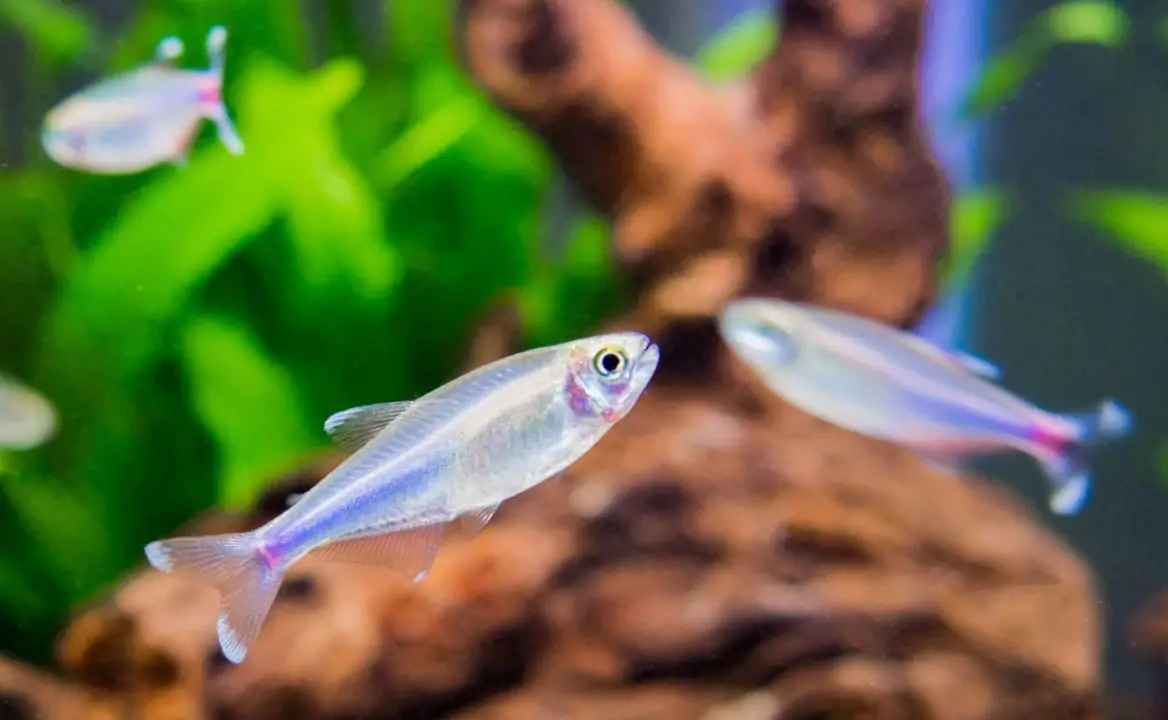
Tank Size
Cochu’s tetras are relatively small fish and also produce very little biological waste. However, they are not meant to be kept alone. You should at least keep a school of 6 blue tetras.
One inch of fish requires 2 gallons of water. As the adult Cochu’s Blue Tetra gets up to 2 inches, a group of fish needs at least 25 Gallons of water. A bigger tank is always better.
Lighting in the Aquarium
Keeping a good light in a tank full of plants is a must. But in the case of blue tetras, lighting can be tricky, blue tetras prefer a planted tank with a lot of shady places to hide, but the plants require light for proper growth.
You rather can keep fake plants and have a moderately lit tank, or if you’re planning to plant the tank, make a lot of hiding places where no lights can penetrate for the fish to hide.
Water Quality
The quality of water in the tank plays a vital role in the well-being of blue tetras. They can withstand a variety of water parameters; however, for them to thrive in your tank, keeping the quality of water pristine is a must.
You will need to maintain the water temperature, pH and hardness, filtration system in your aquarium to maintain your aquarium water. Let’s get deeper into the topic.
Water Temperature
Cochu’s blue tetras can withstand a variety of temperatures. In the wild, they stay in the water, having a temperature of 72°F – 82°F. In your tank, it is best recommended to keep your water temperature at around 78°F.
Water pH and Hardness
Water in the natural habitat of Cochu’s blue tetra is generally soft to intermediate. So they will prefer water on the softer side in their tank. The pH of the tank should be in the range of 6 to 7.5. Whereas the hardness of the water should be around 5 – 12 dH.
Water Filtration
Keeping a powerful internal filter is not recommended. As blue tetras are small in size, the currents of the filter might push away the fish. A gentle filter like hob (hang on the back) filter, sponge filter is best recommended for Cochu’s blue tetra.
Substrate and Decoration
Cochu’s tetras are relatively smaller tetras; they prefer hiding spots throughout the tank. Adding a lot of plants, pieces of driftwood, and rocks would do fine.
Likewise, as the fish is blue, a darker substrate will pop up their color even more. So, go for darker gravel, or if you are trying to create an aquascape in your aquarium, go for aquarium soil.
Aquarium Care
Caring for your aquarium should be the first thing in your priority. And caring for the tank housing for Blue tetras is easy, 10% water change weekly, and vacuuming the substrate once a month should be more than enough. Always check your water parameter once in a while to make sure that you are providing quality water to the fish to live in. For this, use the API Freshwater Master test kit.
You might like to read more about Tetra Fish Diseases and Treatments
Fish Diet
Blue tetras are omnivorous. However, in the wild, their diet consists mostly of plant-based food. So it is recommended for you to feed your fish with pellets having a higher composition of plant contents.
It helps you replicate their natural feeding habit. In the wild, blue tetras are scavengers. They tend to feed on everything they find in their environment. They usually feed on dead plants, leaves dropped on the surface of the water, and the fruits close to the water surface.
Fish Tank Mates
The best fish to keep along with blue tetra is a school of blue tetras. Some of the best fish to keep alongside Cochu’s tetras are ember tetras, the similarity in their size, but the difference in the color makes it a perfect match.
You can also keep these fish with any other fish from the tetra family. Fish with a gentle temperament like Discuss, Small cichlids, etc. can be kept along with Blue tetras.
Breeding Cochu’s Blue Tetra
A separate tank should be set for breeding blue tetras. A tank set up for a specific purpose will help maximize the chance of getting success while breeding cochu’s blue tetra. Here are some things you’ll need before breeding blue tetra.
The Breeding Tank
The tank for the blue tetras to breed should be densely planted with plants having long smooth leaves and a lot of hiding spots. The water pH should be on the acidic side, and the hardness of the water should be soft. A densely planted tank with a lot of floating plants is recommended for breeding blue tetras. You should add plants like Amazon swords to maximize the chances of your fish breeding.
Water condition
In their natural habitat, blue tetras breed in acidic water. Also, for their eggs to hatch, they prefer softer water. So replicating these factors in your aquarium will allow your fish to encourage and increase the chances of successfully breeding in your tank.
A Good Filter
Filtration in the breeding setup for blue tetra should be the least of concerns in your mind. It is not mandatory, but if you still want to take the extra step in precautions adding a small sponge filter should serve its purpose right. Do not use power filters.
Diet
You will have a higher chance of achieving success if you feed your fish nutrition-rich food to your fishes before you try to breed them. Feeding your fish with high protein-containing fish food will encourage your fish to breed and also will prevent them from munching on their eggs.
Plants
Plants are one of the most important things for success in breeding fishes. And to breed blue tetra’s plants are required to keep the eggs safe from the parents. Plants also ensure the safety of the fry after they hatch out of their eggs.
Breeding process
Breeding blue tetras can be quite tricky at times. You might not be successful even when you set all the parameters right.
All your hard work might come in vain just by a simple deviation in one of any water parameters. And sometimes, your fish might breed in the community tank itself, which will take you by surprise, so it is unpredictable and is not the easiest fish to breed in the aquarium hobby.
As the adult blue tetra starts to breed, the females will lay their eggs in the smooth surface of plants, usually on the underside of the flat long leaves.
Male blue tetra then fertilizes the eggs laid in the leaf. For increased survival rates of the fish fry, you can simply remove the parents and let the fry occupy the breeding tank for themselves.
Breeding difficulty: Moderate to Hard.
Caring the Cochi’s Blue Tetra Fry
After cochu’s blue tetra fry hatch out from their eggs, they are relatively smaller than any other fish fry.
So it is hard for you to feed these fish fry. Adding a lot of plants will allow the fish fry to munch on the plants.
To get an enhanced growth sprout, you should occasionally feed with fish fry with baby brine shrimp once their egg yolks disappear.
Conclusion
In conclusion, Cochu’s Blue tetra is the gem of the aquarium, by gem I mean they look like little pieces of sapphire swimming in the water. It is an absolute pleasure for the viewer to watch these fish swim in your aquarium with its bright and shiny blue color.
Recommended Articles:
- 47 Types of Tetra Fish [From A to Z] | A Complete Tetra Species Guide
- 12 Best Tetra Fish Tank Mates And Fish To Avoid
